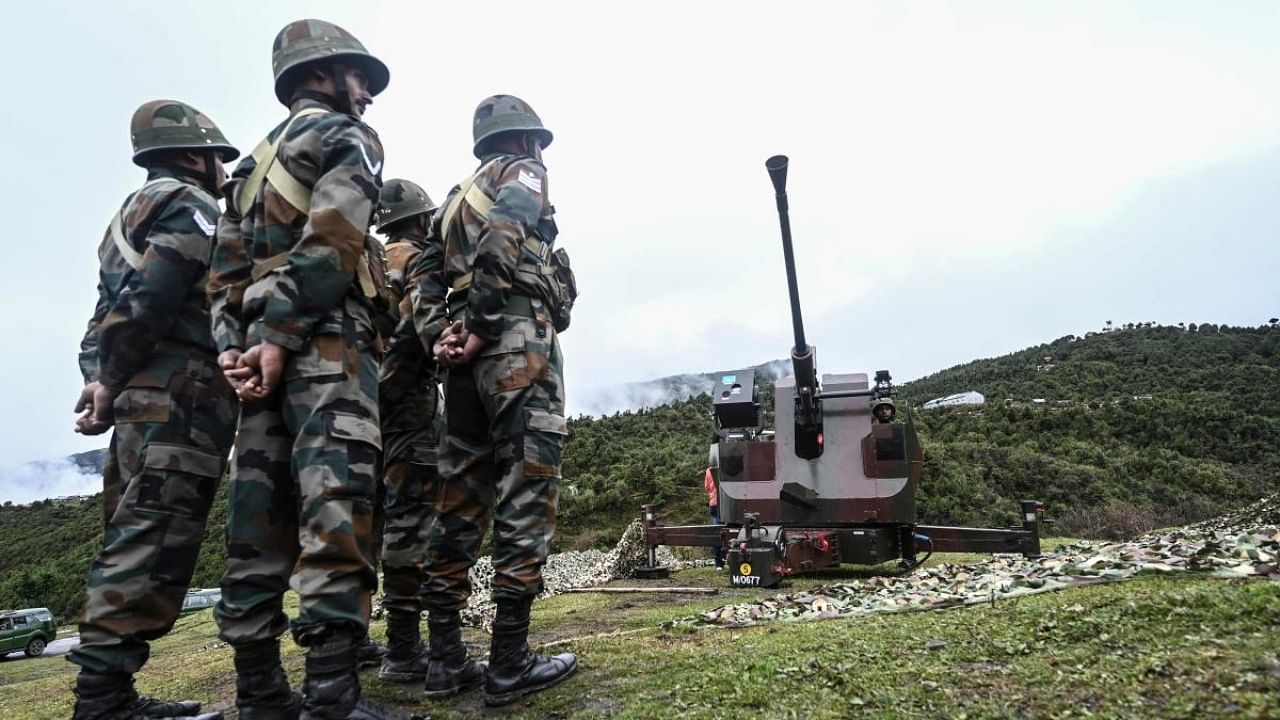
India needs to step up its surveillance along the entire 3,488 km long Line of Actual Control (LAC) with at least 13 hotspots and multiple other contested areas that the Chinese People’s Liberation Army troops and Border Guards can exploit to breach the LAC, defence sources and armed forces veterans said on Wednesday.
The Yangtse area in the Tawang sector in Arunachal Pradesh is a regular witness to Chinese intrusion attempts that started much before the Ladakh and Doklam crises.
Every year PLA troops try to reach an area that they perceive as their territory and is blocked by the Indian troops. The frequency of such attempts has increased from 2015.
On December 9, a battalion of Chinese soldiers proceeded to an area held by the Indian forces in what has been described by Defence Minister Rajnath Singh as yet another attempt to unilaterally change the status quo at the LAC. There is a 100 m long wall that remains as a bone of contention.
With the communist country rapidly building its road and railway networks in Tibet and Xinjiang regions for faster troop mobility, such transgression attempts in the future are likely to enhance as New Delhi and Beijing didn’t make much headway in settling the long-standing boundary dispute in the last few years.
Military veterans suggest increasing the level of surveillance along the entire LAC, notwithstanding the high cost such a step would incur.
“The focus now should be the complete northern border. We have to keep our guard up over the complete LAC, taxing our equipment, human endurance and deployment schedules of units adversely. It's not a happy thought, but has to be planned,” said Air Vice Marshal Manmohan Bahadur (retired), a distinguished fellow at the Centre for Air Power Studies.
Experts also flagged the importance of romping up border infrastructure in the Northeast such as the 2000 km Mago-Thingbu-Vijaynagar border highway that goes parallel to the McMohan line and increased utilisation of strategically important Donyi Polo airport and the eight advanced landing grounds that were developed by the IAF for operations.
There is no slackening of infrastructure build-up on the other sides of the LAC.
There are two major dual-use airports nearby (Shigatse Peace Airport and Nyingchi Mailing airport) and China last year completed construction of a new road and tunnel system connecting the eastern Tibetan city of Nyingchi to Medog County, a remote area that sits directly on the China-India border. The new roads and tunnels reportedly shortened the distance from 346 km to 180 km and cut the travel time by eight hours.
